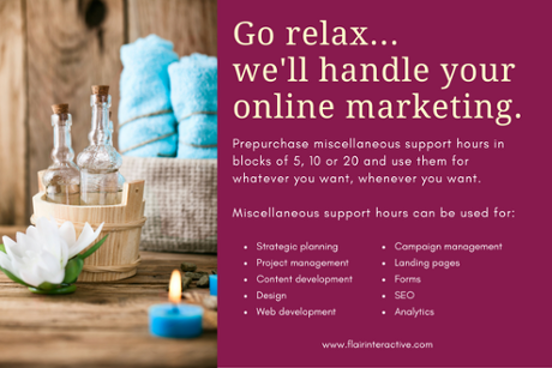Most of us have figured out at this point that Content Marketing isn’t a magical powder that gets sprinkled on our marketing plans and suddenly, all of our
goals are instantly met. No, content marketing is nothing more than a tried-and-true formula. Effective application of that formula is what truly yields success.
Queue nebulous time warp squiggles back to the year 2015 when Flair Interactive posted the blog, What Should be Included in My Content Marketing Strategy. While the blog is on point in terms of building and executing on an inbound marketing plan, in 2017, we’ve taken some measures to perfect the formulaic fairy dust even more. As you dive into your plan this year, keep these additions in mind:
Create data-driven goals—this is still very much the starting point of your content strategy. While not much has changed here since 2015, you’ll want to make sure your goals are clearly defined and mutually agreed upon by everyone. Ensure your ‘wins’ or ‘milestones’ are marked and attainable. Finally…do your homework. Avoid arbitrary, executive-driven numbers. Look at your competitors, your metrics, what’s worked, and what hasn’t worked before getting to an achievable number.
Get to know your buyers—yes, this is still all about data-gathering and discovery. This is where you’ll still get a thorough scan of every potential buyer. Those who know you. Those who don’t. Those who don’t think highly of you. Those who do. Dive in as if you were determining what movie to see next or what restaurant to go to over the weekend. Consider ones you’ve been to and ones you haven’t. Read all of the reviews. Not just the good ones. Truly determine how your buyer sees you and your product. Not the reverse.
Build your personas—once you have a 360-degree view of your buyers, start building your fictitious, representative personas. But make sure you peel beyond the first layer. Don’t gather a few demographics and call it a day. Dive deeper in your buyers’ needs, inclinations, work styles, challenges, and opportunities. For instance, if you’re a cloud-based SaaS company and you know your buyer is intimated by technology, your content assets should be focused on easing their technology fears, and bridging knowledge and utlization gaps.
Build themes to drive content—before getting into your messaging, try and compartmentalize a bit. Take a look at your FAQs, blog topics, and even customer searches and feedback to get an idea of what topics are peaking the interest of your buyers. What problems can you solve to help your buyers in some way. All of your themes should be timely and helpful but should be equally relevant to your product and/or service. You’ll use your themes not only to hone your messaging but to build out your content assets.
Build your story—once you’ve identified your buyer personas and content themes, start building your story. Consider your buyer personas your readers. Your entire story should be developed with them in mind. Your content themes will serve as chapters within your story. Each chapter will share new, connected, helpful information that will bring your buyer deeper into the story. At the end of the story, your buyer should have a thorough understanding of their issue and should have a strong appreciation for how your product can help.
Identify your channels—While a number of new channels have entered the scene since 2015, the philosophies behind identifying channels that work for you remains the same. Know your buyer personas. Know your budget parameters. Know the channels that will best support your story.
For more details about building an inbound marketing strategy, check out this new video.
Need help developing and implementing your content marketing strategy for the year? Contact us today or sign up for our pay-as-you-go marketing support hours and we can start building your plan tomorrow!

